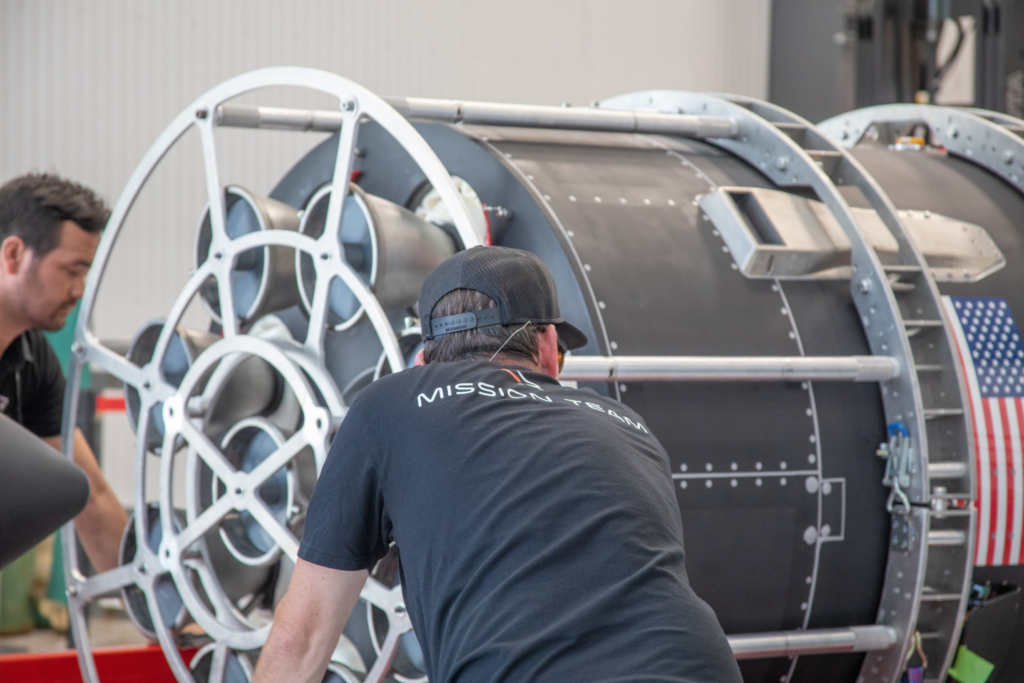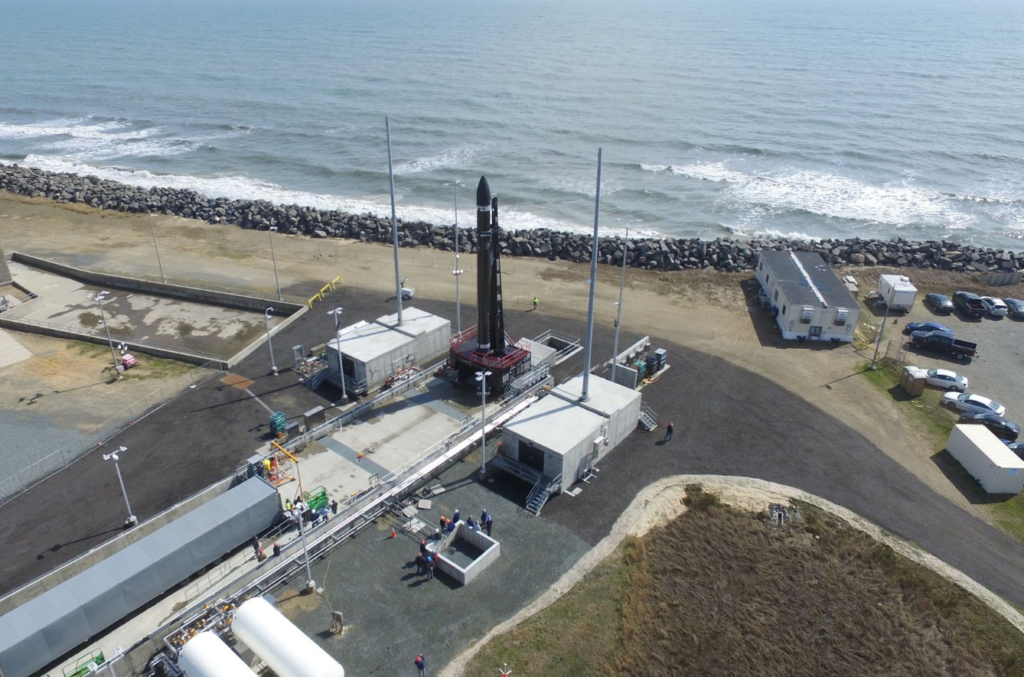
Rocket Lab Is Almost Ready For Its First U.S. Launch
For years now Rocket Lab has been launching Electron and significantly improving what the company is capable of. One of the main focuses has been to increase launch cadence and get Electron lifting off more often. While the addition of a second pad at Launch Complex 1 was a big help, just weeks from now an even bigger step is being made.
Specifically, next month in December, Rocket Lab is set to launch for the first time from Launch Complex 2. This site has a single pad and will also mark the first launch from U.S. soil which presents even more opportunities for the company. While a flight termination unit and a few other factors stalled this site’s maiden flight, it is finally set to happen very soon.
If successful, this additional site will help Rocket Lab launch Electron much more. The mission, named “Virginia is for Launch Lovers,” will deploy satellites for leading radio frequency geospatial analytics provider HawkEye 360. Here I will go more in-depth into the upcoming mission, why this first launch is so important, what to expect in the coming weeks, and more.
First Launch From LC-2

Just over one week ago Rocket Lab announced specific dates for the first mission from LC-2. On November 9th, the company tweeted saying, “Mark your calendars, Electron has a date with Launch Complex 2! The window for our 1st mission from U.S. soil opens Dec 7 ET. We’re excited to launch for @hawkeye360 and bring a new launch capability to the Eastern Shore.” It will be Rocket Lab’s first lift-off from Launch Complex 2 at Virginia Space’s Mid-Atlantic Regional Spaceport within NASA’s Wallops Flight Facility – a launch pad developed to support Electron missions from U.S. soil for government and commercial customers. The launch window has been set following recent progress by NASA in certifying its Autonomous Flight Termination Unit (NAFTU) software, which is required to enable Electron.
In this case, Launch Complex 2 supplements Rocket Lab’s existing site, Launch Complex 1 in New Zealand, from which 31 Electron missions have already been launched. This extensive launch heritage already makes Electron the most frequently launched small orbital rocket globally, and now with two launch complexes combined, Rocket Lab can support more than 130 launch opportunities every year, delivering unmatched flexibility for rapid, responsive launch for government and commercial satellite operators. The launch pad and production complex for Rocket Lab’s large reusable Neutron launch vehicle will also be located at the Mid-Atlantic Regional Spaceport, streamlining operations across small and large launch.
Over the past couple of weeks, we have watched as Rocket Lab prepared for this mission. This included the delivery of Electron, finishing touches being made at the pad, payload devliery and integration, and more. All of which is set to pay off in just a few weeks on the 7th.
In addition, Rocket Lab founder and CEO Peter Beck said. “We are honored and excited to bring a new launch capability to Virginia’s Eastern Shore. Electron is well established as the leader in small launch, reliably serving the responsive space needs of the commercial, civil, DoD, and national security markets alike. With our inaugural mission from Launch Complex 2, we are immensely proud to expand on this strong launch heritage by enabling a new capability for the nation from Virginian soil. We look forward to making history this December with our dedicated mission partners HawkEye 360, NASA, and Virginia Space.” “For our fifth cluster of next-generation satellites, we needed optimal orbital flexibility — and Rocket Lab’s new Electron launch pad in Wallops, Virginia provides the perfect domestic capability,” said CEO of HawkEye 360, John Serafini. “Rocket Lab’s inaugural launch facilitates our first mid-latitude satellite cluster, which will strengthen the diversity of our geospatial insights for our government and commercial customers across the globe.”
The “Virginia is for Launch Lovers” mission will be the first of three Electron launches for HawkEye 360 in a contract that will see Rocket Lab deliver 15 satellites to low Earth orbit between late 2022 and 2024. These missions will grow HawkEye 360’s constellation of radio frequency monitoring satellites, enabling the company to better deliver precise geolocation of radio frequency emissions anywhere in the world. Supporting Rocket Lab’s vertical integration strategy, Rocket Lab will also supply HawkEye 360 with separation systems produced by Planetary Systems Corporation, a Maryland-based space hardware company acquired by Rocket Lab in December 2021.
Payload & Launch Cadence

Now that we know more about this upcoming mission, we can take a closer look at the mission payload and why this launch is so important to Rocket Lab’s future. HawkEye 360 currently delivers a critical source of global knowledge based on radio frequency (RF) geospatial insights. Cluster 6 is a trio of next-generation satellites that will soon join the growing constellation HawkEye 360 has developed to detect and monitor RF signals globally. This latest set of satellites will be the first to enter an inclined orbit, further boosting revisits over the midlatitude regions of the globe. This addition also brings an improved revisit rate, allowing for revisits as frequently as once per hour, anywhere in the world. The additional capacity, plus an expanded collection optimization to improve data in the 15-18 GHz range, exposes new and meaningful applications for our customers, especially in high-demand areas.
As for the launch site itself, over the last couple of years, it has had a few complications. Back in 2019, Rocket Lab, officially opened Launch Complex 2, the company’s first U.S. launch site, and confirmed the inaugural mission from the site will be a dedicated flight for the U.S. Air Force. As we know now, this mission or any mission for that matter has lifted off from LC-2. Construction on the site began in February 2019, with the site completed and ready to support missions just 10 months later. Designed to support rapid call-up missions, Launch Complex 2 delivers responsive launch capability from home soil for U.S. government small satellites. The ability to deploy satellites to precise orbits in a matter of hours, not months or years, is increasingly important to ensure resilience in space.
However, despite this launch complex practically being ready years ago, we haven’t seen a launch until now. As partially mentioned prior, the main reason has to do with NASA and the NAFTU Software. NASA describes NAFTU as a game-changing command and control system available to launch vehicle providers for use at all U.S. launch ranges in ensuring public safety during launch operations. Among the companies that are working with the NAFTU software is Rocket Lab, which has a launch pad at Virginia Space’s Mid-Atlantic Regional Spaceport at NASA’s Wallops Flight Facility. Unfortunately, there were quite a few problems with the system that caused long delays for the Rocket Lab site. Thankfully, this has now been solved and the first launch is almost ready.
Earlier this year David L. Pierce, Wallops Flight Facility director said in relation to the software making progress, “This is a major milestone that enables Rocket Lab and other U.S. launch companies to integrate the software now with their launch vehicle’s hardware and run performance simulations. This is a key achievement toward enabling Rocket Lab launches from Wallops, in parallel with the NASA teams’ final safety certification steps, which are currently underway. Rocket Lab’s use of the NASA software will enable a high degree of confidence moving forward toward launch.” NASA Wallops, in collaboration with NASA Headquarters, the U.S. Air Force, U.S. Space Force, and the Federal Aviation Administration, began development of the NASA Autonomous Flight Termination System in 2020, when the program became fully funded. The NAFTU system is more complicated than other, proprietary automated flight safety systems (AFSS) in that it’s designed to be customizable and support a wide array of launch vehicles at any launch range. “While more challenging, the effort overall will provide the single largest impact and the greatest economic benefit by allowing commercial launch providers a common, certified system for flight termination,” said retired Air Force Maj. Gen. Ted Mercer, CEO and Executive Director, Virginia Space.
Autonomous Flight Termination Systems like NAFTU are a key component of the launch range of the future and a mandatory requirement for Department of Defense (DOD) launches beginning in 2025. The system provides a number of benefits, such as wider launch windows, smaller downrange safety corridors that enhance area clearance operations, and reduced need/expense of ground-based systems. AFSS will be a game changer for enabling launches from Wallops and decreasing cost for access to space in the future, and NAFTU will be the system that leads this effort for many years to come.
Conclusion
Rocket Lab has been working to increase launch cadence for years now. While the company has had great success at LC-1, they plan to provide even more opportunities with the first launch from LC-2 scheduled for next month. If this first mission goes well, we can expect to see an impressive increase in Electron launches as Rocket Lab continues to push the envelope. We will have to wait and see how it progresses and the impact it has on the space industry.
